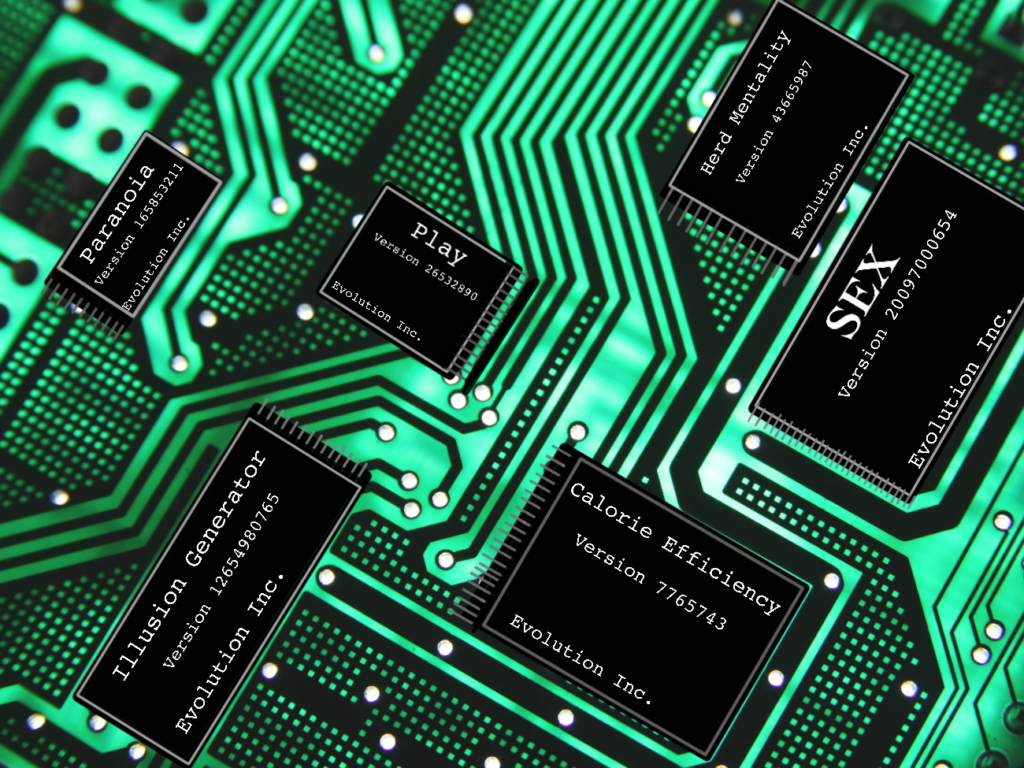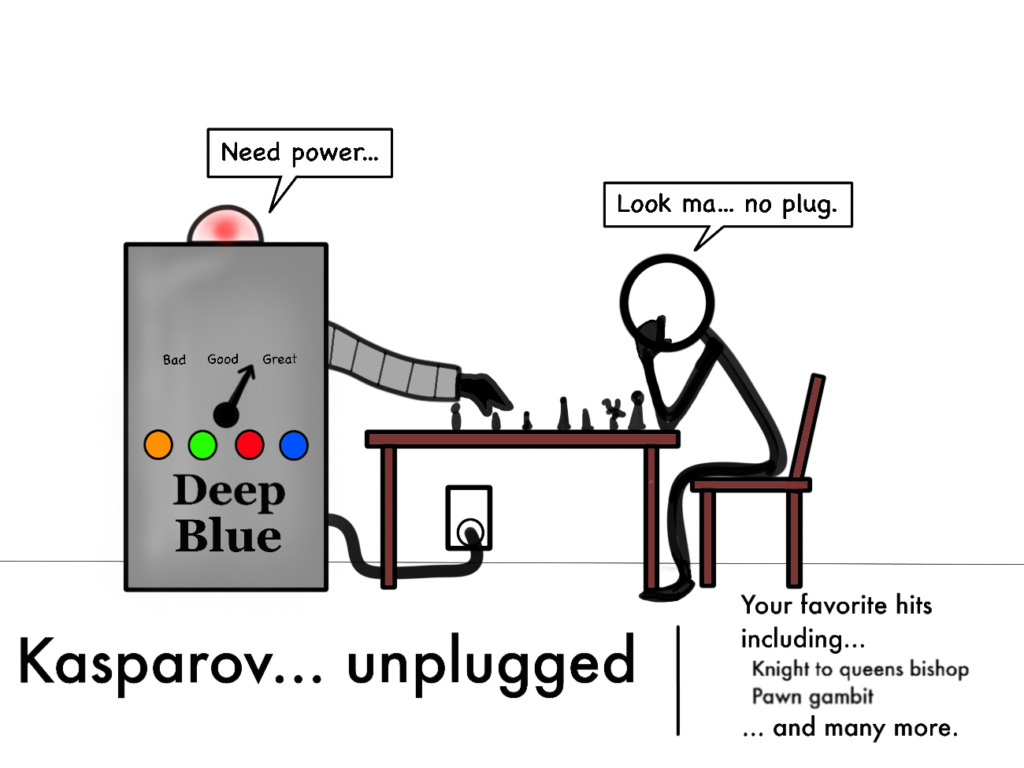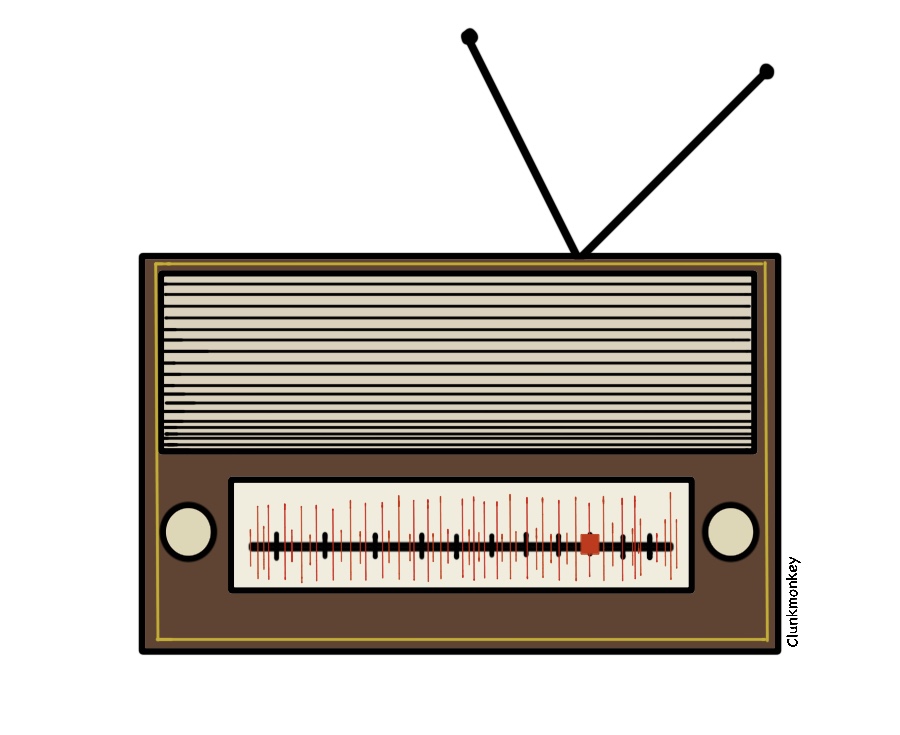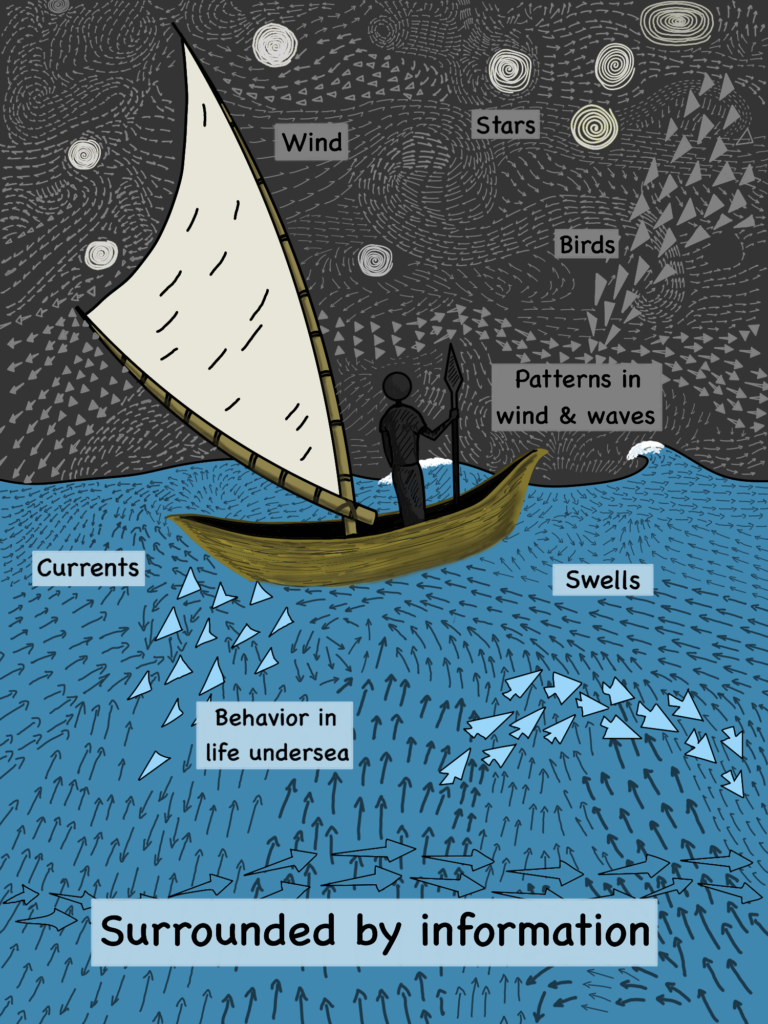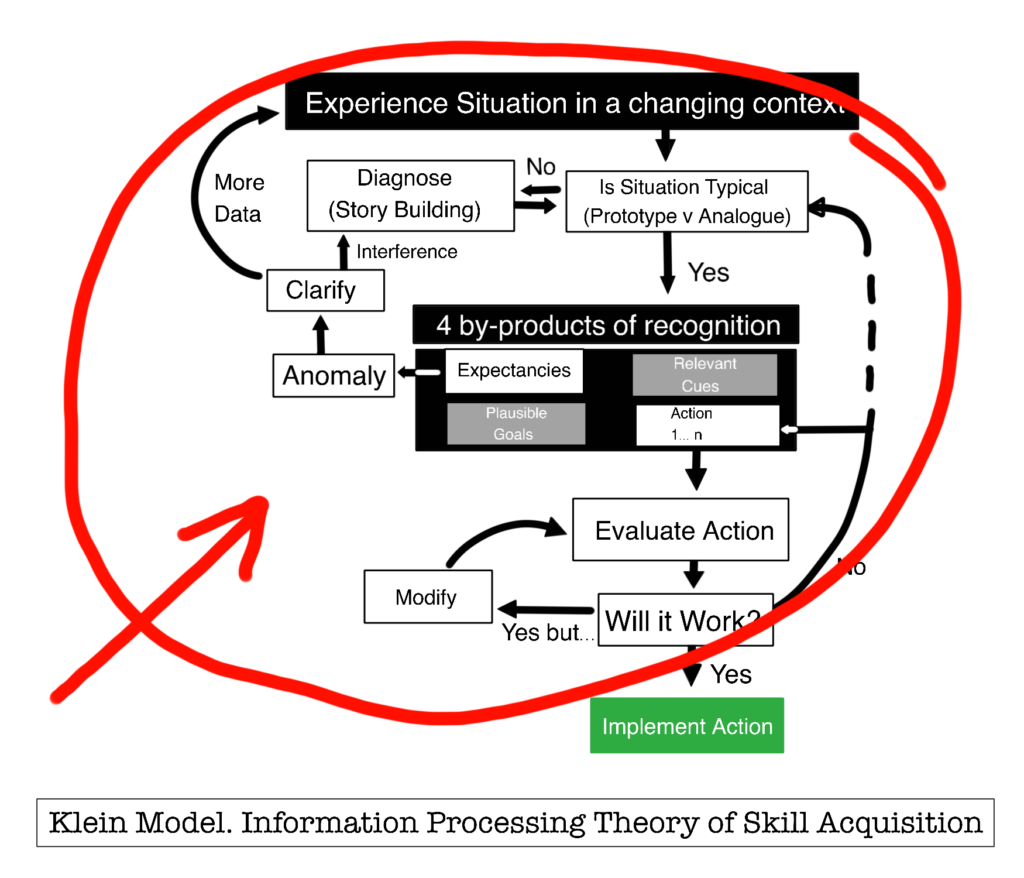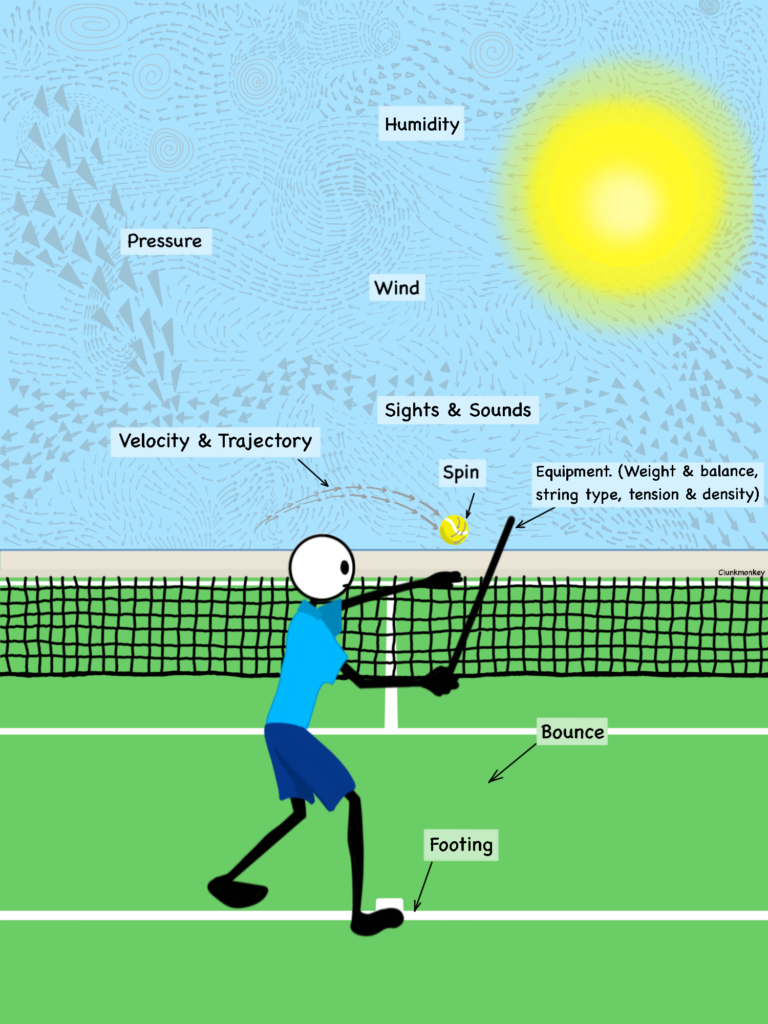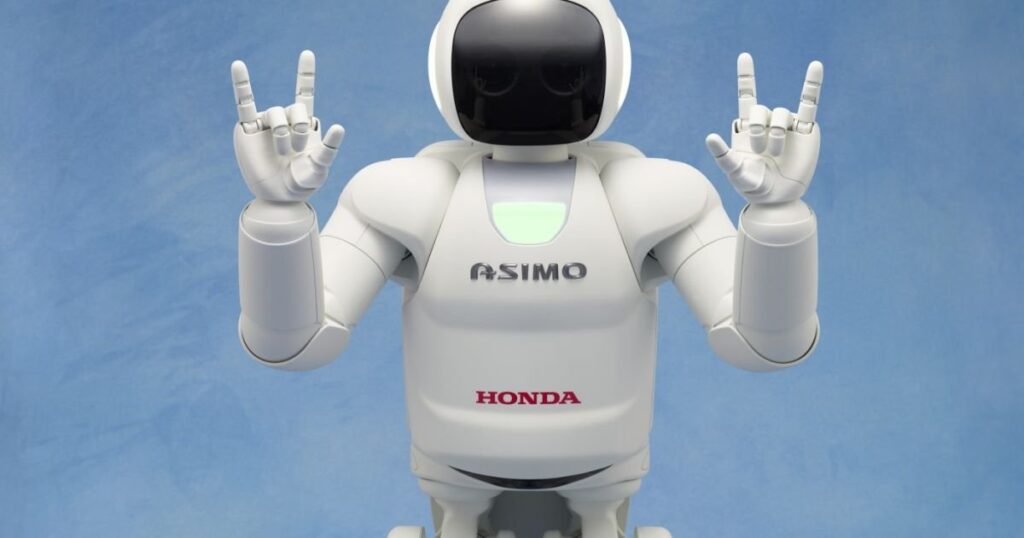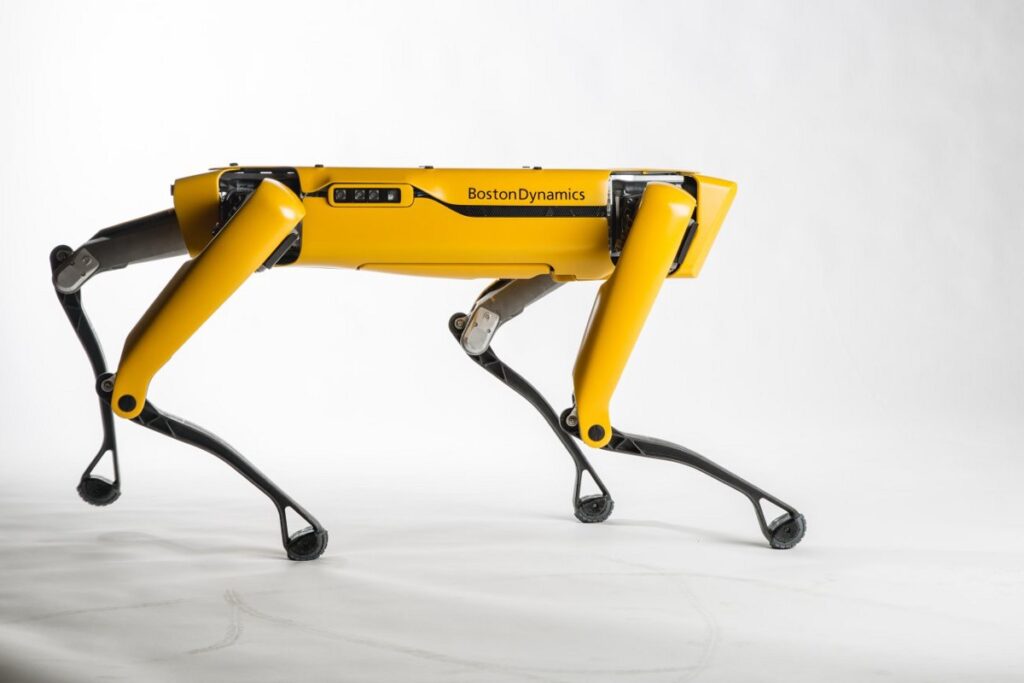There are heaps of theories about how learning happens. But they all can be boiled down to two camps of thought. Information processing, (IP), and Dynamical Systems, (DS).
IP views the brain like a computer.
We take information in and internally process it.
We have a long history of using the top technology of every era as a metaphor for our brain. The 1500’s saw the introduction of simple machines and Renee Descartes referred to the brain as a machine. When the engineering of machines improved Thomas Hobbes attributed thinking to mechanical operations of the brain. After the invention of long distance communication Von Helmholz likened the brain to a telegraph. The twentieth century brought computers… and the ‘information processing’ view of learning.
Metaphors are how we talk about things we don’t understand… not explaining them.
The brain is not built like a computer. No hard drive. No CPU. No motherboard.
It also doesn’t work like a computer.
In chapter 2 we talked about this chess match.
Deep Blue calculated the odds of hundreds of million of moves every turn. And it needed the electricity of a city block to do it.
Kasparov chose between a half dozen possibilities… without plugging in.
No one knows how we reduce millions of possibilities to a few. Nor how we choose from those few. One thing that is clear… we do it differently than a computer does.
Computers don’t replace human thought… they compliment it.
This is why we use computers to perform complex calculations and store exact copies of information, and we don’t rely on them for creative input and relationship advice.
IP treats a person as it it is separate from its environment. Not physically… (our survival obviously depends on it), mentally… learning is a process that takes place in an individuals brain.
In this view of us… intelligence and performance are innate.
Dynamical Systems (DS) views a person as a radio…
tuning into a vast reservoir of information that surrounds us.
DS is a radically different view of how we operate. Consequently, it’s a bridge too far for many. (Even though they rely on a device that does the same thing.)
Here’s a simple look at DS in action: you decide to walk to a new grocery store. Before leaving you look at a map and memorize the directions. But… on the way, you forget them. Your phone doesn’t have service. You’re lost.
Then you see someone carrying a grocery bag that has the name of the store you’re looking for. They direct you to the store.
You tapped into your environment for a solution.
Expand your field of vision. You are surrounded by information.
(Image credit: the great Carl Woods)
Here learning is a relationship between the individual and their environment… the learner and their environment are inseparable. And learning is embodied. That is to say that it happens throughout us… touch and smell and sight and movement… all of our systems participate. Incidental learning counts.
IP focuses on human doings.
EcoD on humans being.
If we discover that DS is closer to what’s really going on, it changes our thoughts about what learning is… and where it goes on. Will it change our ideas of what’s going on at the cellular level too?
Throw motor skills learning into the mix and you add unknown layers of the unknown.
Here is the IP model of motor skills:
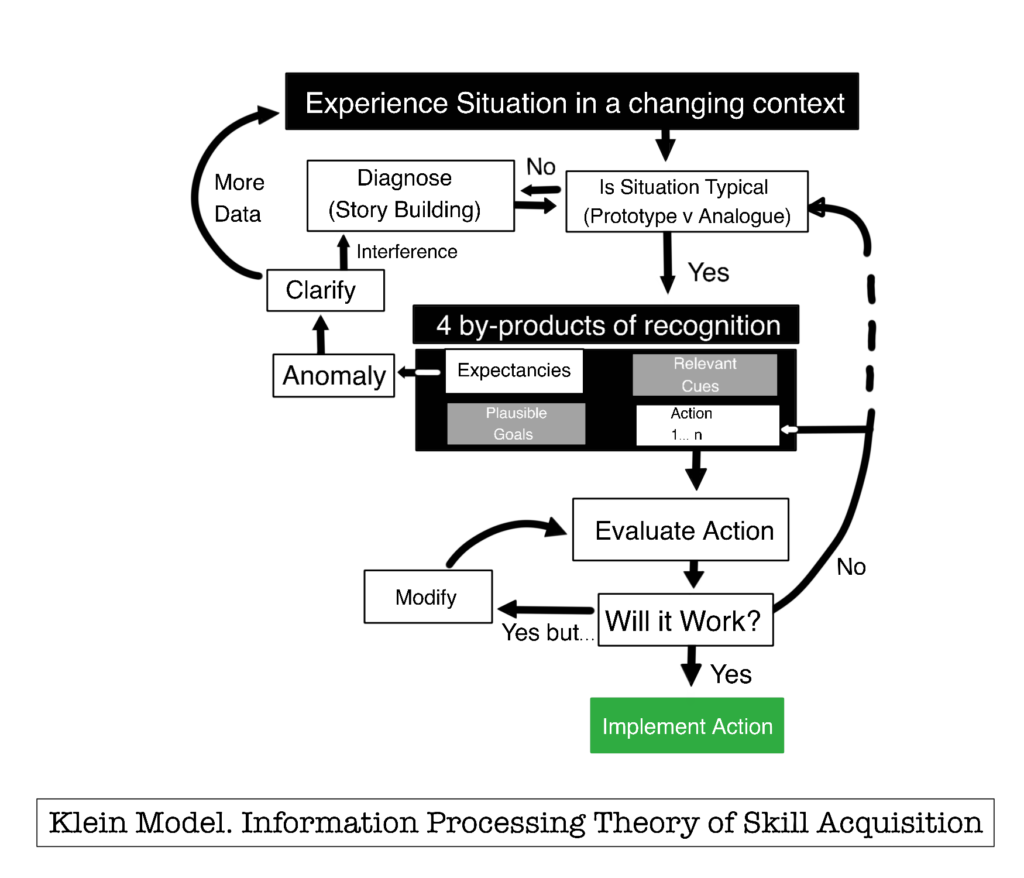 The obvious problem with this is there’s all this detail in the top of the model…
The obvious problem with this is there’s all this detail in the top of the model…
and then… “implement action”.
There is no one on this earth who knows how the decision from the top of the model becomes specific action. It’s no stretch to imagine that the process is at least as complex as the decision itself. And that is omitted from the model.
The common explanation for how it all happens: experience is stored in mental models.. and retrieved as needed. You know this as “muscle memory”.
You memorized the alphabet and your times tables in a few weeks. Do you really think it takes fifteen years to memorize a freaking golf swing? I mean… the goddamned ball doesn’t even move.
As evidenced by the millions who take lessons forEVER, apparently, many do. (A great piece of marketing by golf pro’s, btw!)
Muscles don’t have memory cells. So… where is the model stored? How is it stored? How is it recalled? How does it become a model in the first place? How does the model become action?
Again, no one has answers to these questions.
Here is how EcoD sees motor skills learning.
In dynamical systems theory, perception doesn’t lead to action… it’s connected to it.
There is nothing to be recalled, because nothing repeats. Every moment is different. Every act, unique. The Japanese principle of ichi-go ichi-e.
Many prefer the IP model. It’s specific, more linear, more ego focused and thus more believable. By the way, these are the same people who have no qualms entrusting the economy to an “invisible hand”.
Looking through a different lens… Honda made a bipedal robot based upon the information processing model of human thought. One big brain processing information and sending out orders to all the parts that need to do something.
Asimo can walk and dance and climb stairs. But it does those things s-l-o-w-l-y. Disruptions confuse it. And when it gets confused, Asimo takes A LOOONG time to recalibrate.
Think marching band. Coordinated activity driven by central command. Remember the cartoons where the band leader falls down and the entire band piles up on top of him? That’s kinda what happens to Asimo.
Boston Dynamics built a dog robot based on dynamical systems.
They put the “thinking” out in the legs and gave it just enough central brain to keep them all going. Big Dog is fast and unconfusable.
Think flock of starlings. Thousands of birds. Their formation in constant flux. No central authority. Also, no collisions.
Big Dog moves more like a dog than Asimo moves like a human.
What does that mean? No one is sure… yet. But the implications are clear… embodied cognition… DS works.
Accordingly, compromise theories of learning are emerging. Mix and matches of IP… and DS.
Compromise is always the idea that no one believed in the first place. (Its why no one led with it.) Like wearing one black and one brown shoe because you couldn’t decide what went best with your pants. (I borrowed that from Chris Voss, the world’s greatest negotiator)
But that’s not the biggest argument between mixing and matching between IP and DS. The nail in the coffin is that it’s not possible. The theories are based on opposite views of the way our systems operate. They are mutually exclusive.
Again, we don’t know which theory explains how we learn.
This is a fact that should be clearly articulated to every learner… and isn’t.
In the next chapter… learning methods.

